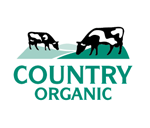Profile
Perennial ryegrass and meadow fescue provide high yields with excellent forage quality. On medium to dry sites and under dry conditions the species red fescue and cocksfoot can in particular ensure the yield. The red fescue and the white clover are able to close the sward with their creeping shoots, and the white clover additionally provides nitrogen and enhances the palatability.
-
 High yields and qualities
High yields and qualities
-
 For dry and shallow sites
For dry and shallow sites
-
 With red fescue for a dense sward
With red fescue for a dense sward
Sowing pattern

| New sowing | ||
| New sowing | ||
Locations

| Dry |
+
+
|
|---|---|
| Normal |
+
+
|
| Wet |
+
|
| Peat Soil |
+
|
| Altitude |
+
+
|
|
Dry
+
+
|
|
Normal
+
+
|
|
Wet
+
|
|
Peat Soil
+
|
|
Altitude
+
+
|
Usage

| Grazing |
+
+
|
|---|---|
| Grazing and cutting |
+
+
+
|
| Cutting |
+
+
|
| Extensive usage |
+
|
|
Grazing
+
+
|
|
Grazing and cutting
+
+
+
|
|
Cutting
+
+
|
|
Extensive usage
+
|
Fodder values

| Energy density |
+
|
|---|---|
| Digestibility |
+
+
|
| Protein |
+
+
|
+++ = highly suitable | ++ = suitable | + = conditionally suitable | - = not given
|
Energy density
+
|
|
Digestibility
+
+
|
|
Protein
+
+
|
+++ = highly suitable | ++ = suitable | + = conditionally suitable | - = not given
Cultivation notes

| New sowing | 35 - 40 kg/ha | |
|---|---|---|
| Sowing time | from March to September | |
| Usage per year | 3 - 5 | |
| New sowing | 35 - 40 kg/ha | |
|---|---|---|
| Sowing time | from March to September | |
| Usage per year | 3 - 5 | |
All organic mixtures are produced with 100 % organic content, if possible, in accordance with the EU Organic Farming Regulation 2018/848. For mixtures with at least 70% organic content, the farmer must obtain approval from his inspection body for the use of the conventional content before sowing, starting with production in January 2022. We aim to use at least 2 varieties per ripening group for mix proportions of more than 20 % of one species and for German ryegrass. The choice of varieties may vary depending on production. If individual species or varieties are not available, they are replaced by equivalent ones. The seed strengths are calculated for an optimal seedbed; in case of poor external conditions - such as insufficient seedbed, late sowing date, insufficient nutrient supply and unfavourable weather - the seed strengths should be adjusted upwards.
